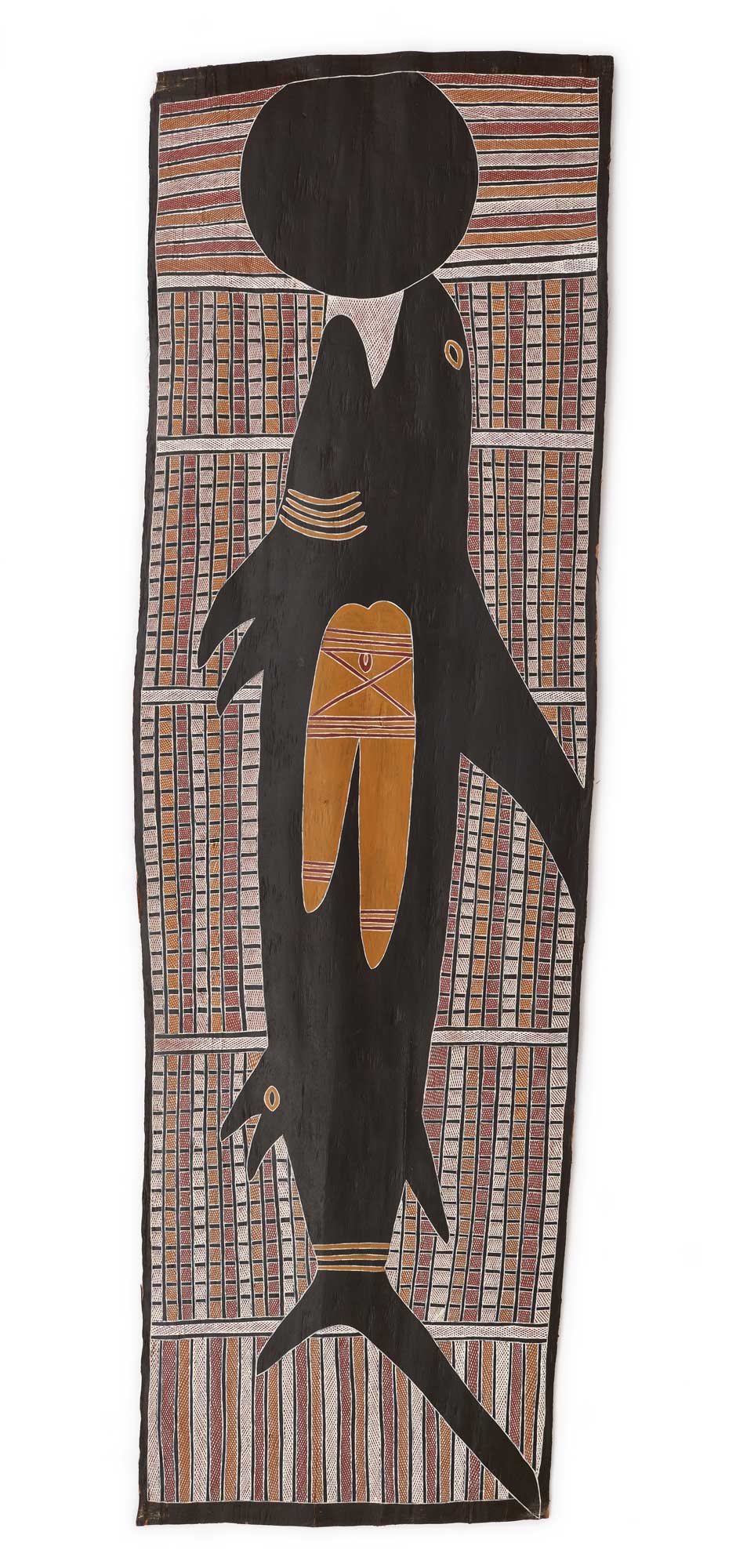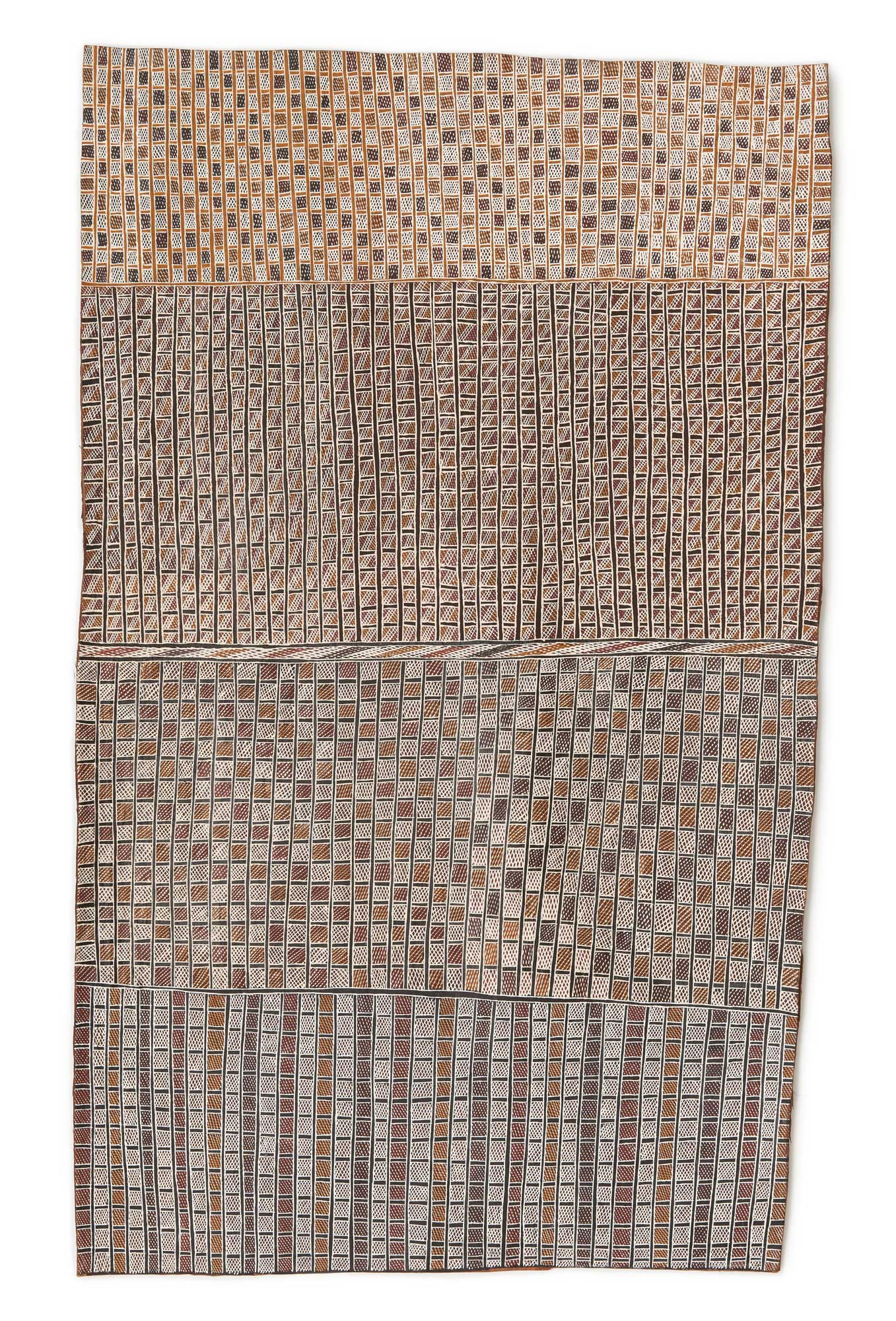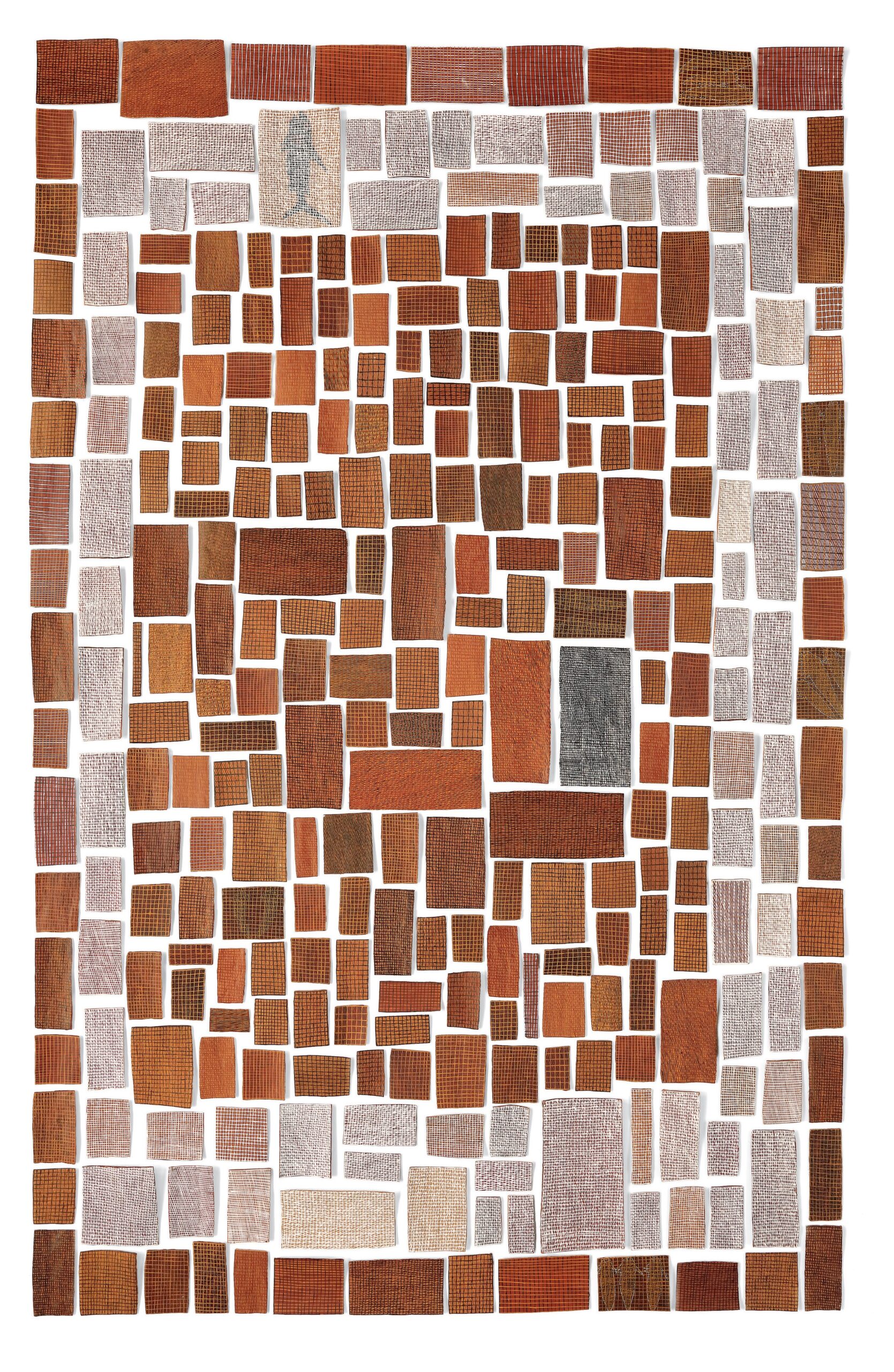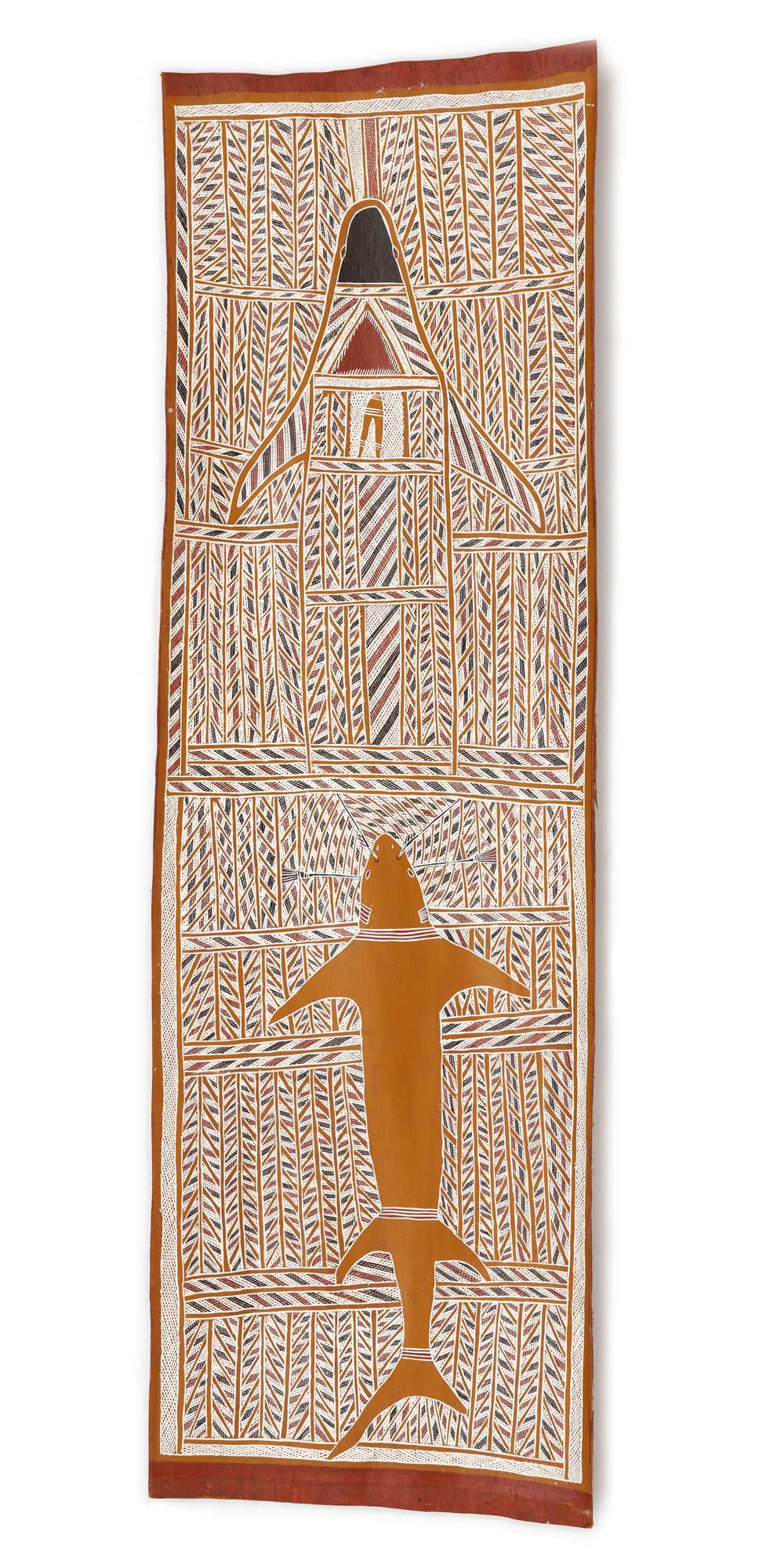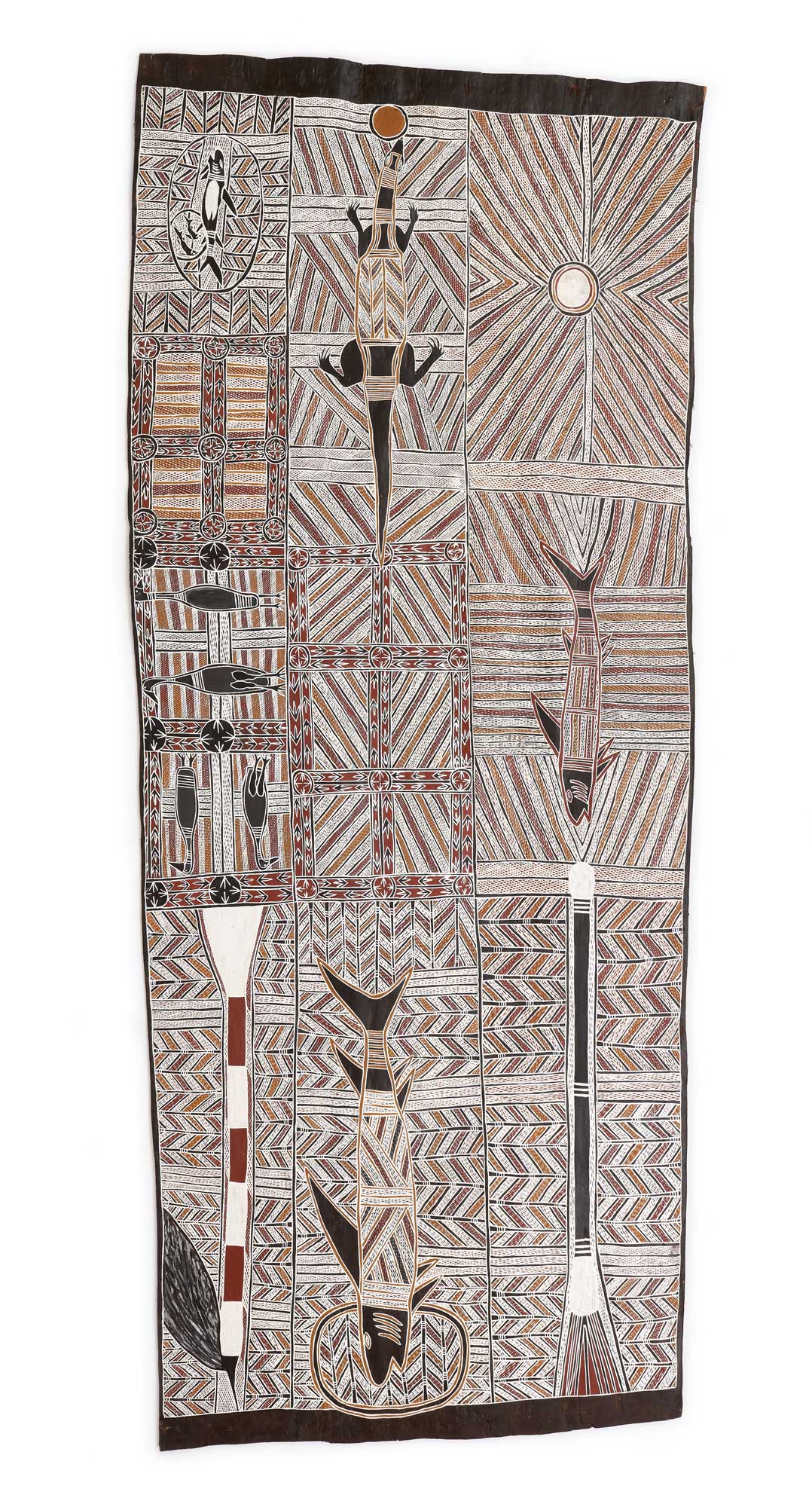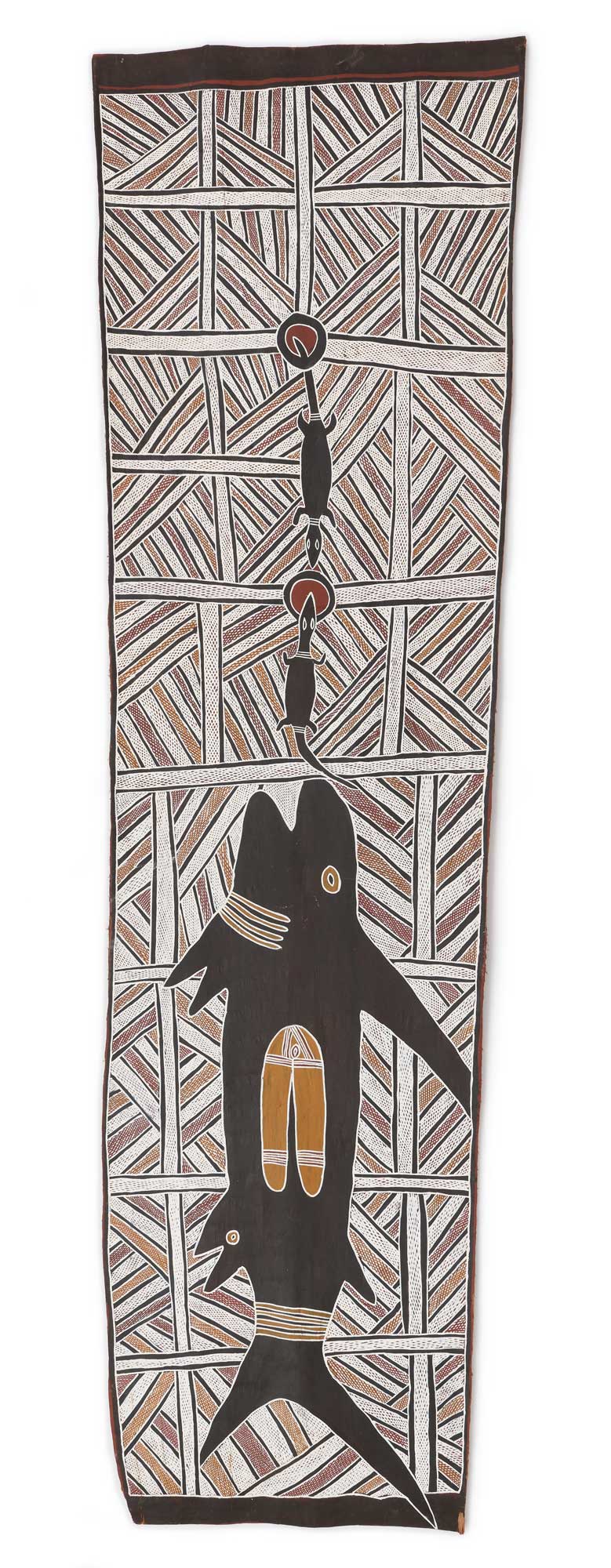
Mäṉa | The Shark
Ancestral sharks, or mäṉa, play an important role in the songlines of several Dhuwa moiety clans. These songlines recount the journeys of named individual sharks, whose travels connect the people and Country of different clans. On their journeys, these sharks interact with other ancestral beings, and on occasion, the travels of one ancestral shark will intersect with the songline of another shark.
Maḏayin includes paintings of two different ancestral sharks. The first connects the Djambarrpuyŋu, Dhuḏi-Djapu’ and Gupa-Djapu’ clans. This shark begins its journey in Djambarrpuyŋu Country, in the waters of Gurala at Djawaḻ (the Buckingham Bay region). At Garraṯa, Mäṉa was speared by the ancestral hunter Murayana. Murayana was a Gupapuyŋu (Yirritja) clan hunter, who would later transform into the Gumatj trickster Ganbulapula. This section of Mäṉa’s journey can be seen in the painting Djambarrpuyŋu Mäna | Shark of the Djambarrpuyŋu Clan (1996) by Manydjarri Ganambarr.
Wounded and weary, Mäṉa left his Djambarrpuyŋu homeland, traveling onto Dhuruputjpi. On his way, he stopped at Gurundawuy, where he saw the Djan’kawu and was frightened. At Dhuruputjpi, he changed his language from Djambarrpuyŋu to Dhuḏi-Djapu’, taking on the sacred names Gundunuru, Gawirruŋa, and Ŋalaŋnalŋ. This section of Mäna’s journey can be seen in the paintings of Djutadjutja Munuŋgurr and Dhukaḻ Wirrpanda.
As Mäṉa continued his travels, he called out the sacred names of many Dhuwa places. At Wäṉḏawuy, he encountered hunters of the Gupa-Djapu’ clan making fish-traps and poisoning fish with dhaŋgi, the anesthetic pulp of wild quince bark. The hunters tried to capture Mäna using a woven fish-trap. Summoning all his strength, Mäna swung his head and broke free of the trap, creating a bend in the river. This final section of Mäna’s journey can be seen in the paintings of Meŋa, Minyapa and Marrnyula Munuŋgurr.
Mäṉa entered the earth at Wäṉḏawuy and disappeared, and so the songline ends. Our paintings represent this journey to Wäṉḏawuy. It is the river at Waṉḏawuy that we paint on bark, or on the chests of boys for their dhapi’ (initiation ceremony) or old men who are ready to retire from ceremonial obligations.
– WÄKA MUNUŊGURR
A different shark, named Bulmany’dji, is depicted in the painting Mäṉa ga Dhukururru | Ancestral Shark and Sacred Rock (2022) by Manydjarri Ganambarr. This shark belongs to the Ḏäṯiwuy clan and lives at Buḻurruma. Hearing the movement of Wangurri (Yirritja) clan waters rushing downstream, Bulmany’dji travels upstream in Dhuwa waters to meet them, encountering the sacred rock Dhukururru. The mingling of these Dhuwa and Yirritja waters, which relate as yothu-yindi (mother and child) symbolizes the interdependence of the two moieties. Later, Bulmany’dji would also encounter the Djambarrpuyŋu shark, as well as another shark belonging to the Ŋaymil clan.
Filter By
- Select a Filter
- Clans
- Songlines
Selection
